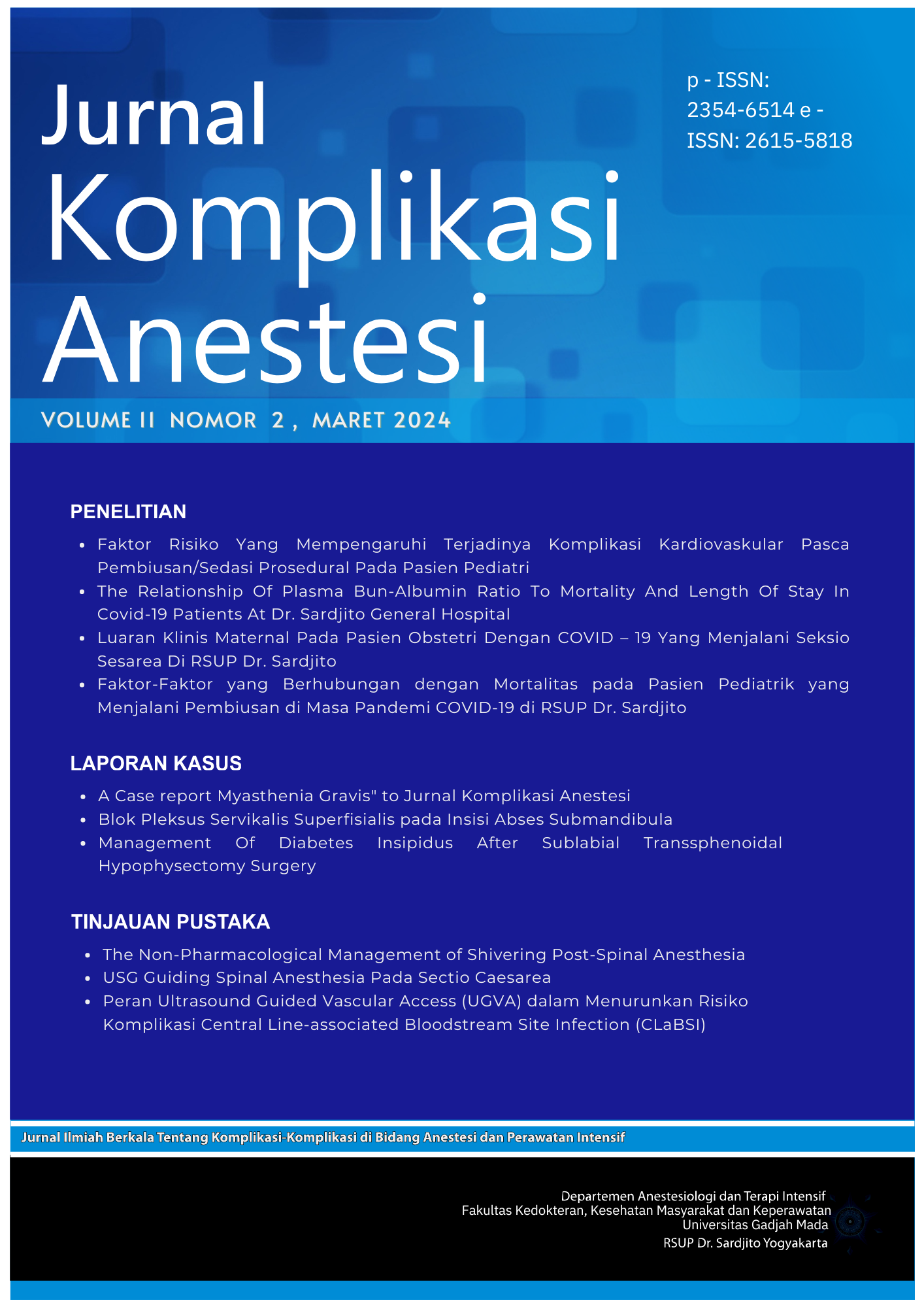Blok Pleksus Servikalis Superfisialis pada Insisi Abses Submandibula
Abstract
This case study explores the use of bilateral superficial cervical plexus block as a regional anesthesia method in a 44-year-old male patient with a submandibular abscess. The patient, who has comorbidities of type 2 diabetes mellitus, renal insufficiency, and grade 1 obesity, underwent a 60-minute abscess drainage incision operation. This technique was chosen based on patient factors and the medical team's preference, avoiding the risks associated with general anesthesia. Lidocaine 2% at 6cc per side was used, demonstrating the effectiveness of the cervical plexus block in this procedure and others such as lymph node dissection and laceration repair. The study confirms that regional anesthesia guided by ultrasound is a quick, resource-efficient, and safe option, with the potential to avoid improper analgesic dosing. For longer procedures, local anesthetics like ropivacaine or bupivacaine can be utilized. The main conclusion is that the superficial cervical plexus block is an effective and safe alternative for anesthesia in certain neck procedures.
Copyright (c) 2024 Timor Krisna Bayu, Calcarina Fitriani Retno Wisudarti, Sudadi, Isroful Ikhsan, Anisa Fadhila Farid

This work is licensed under a Creative Commons Attribution-NonCommercial-ShareAlike 4.0 International License.
The Contributor and the company/institution agree that all copies of the Final Published
Version or any part thereof distributed or posted by them in print or electronic format as permitted herein will include the notice of copyright as stipulated in the Journal and a full citation to the Journal.

















